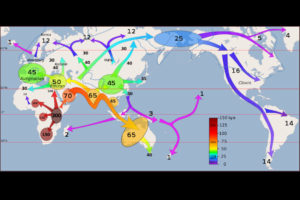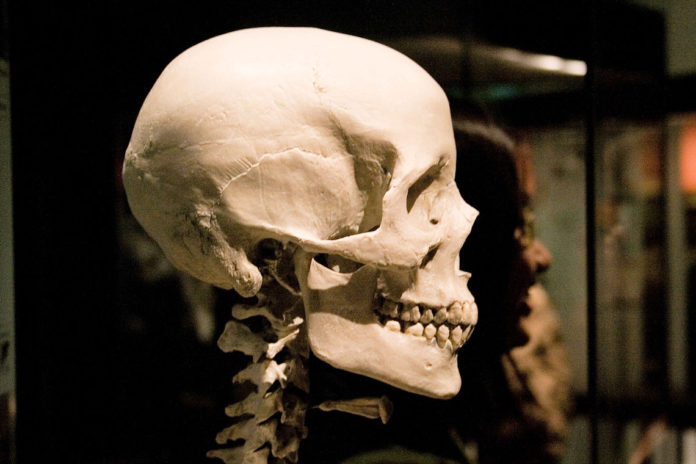Homo sapiens is the binomial name for modern humans. There were several other species that belonged to the Homo genus. However, all these relatives of modern humans are extinct today. Modern humans first appeared in Africa 300 thousand years ago. Today, they have migrated and settled every continent.
About Homo sapiens
Where Do Modern Humans Come From?

Africa: The earliest H. sapiens fossils are from Morocco, Africa. The remains are about 318 thousand years old. Other remains have been found in East and South Africa. These range from 100 to 200 thousand years ago.
Asia: Following the fossil trail, modern humans migrated out of Africa into West Asia. Fossil remains in West Asia 100-300 thousand years ago. From there, humans reached India, East Asia, and Southeast Asia about 70,000 years ago.
Americas: Modern humans migrated and settled in the New World during the Ice Age. The Ice Age caused a lowering of sea levels. As a result, a land bridge was created that connected Asia and the Americas. Humans from Asia crossed this land bridge into the Americas. The oldest known human settlement in North America is about 25 thousand years old. By 15 thousand years ago, humans had reached South America.
Thus, H. sapiens evolved in Africa. Then, modern man migrated out of Africa into Asia. During the Ice Age, humans then crossed into the Americas from Asia. Today, humans can be found on every continent.
Unique Traits of Homo sapiens
Physical Traits: Compared to its close relatives, modern man has a light build. Its skull is thin, with a smaller face. Brow ridges are smaller and its jaw is unique with a distinct chin. Today, there variation in physical features such as skin color is noticeable. However, at a genetic level, these differences are superficial. Modern humans are very similar to one another and share a very common genetic ancestry.
Cultural Traits: A unique characteristic of humans seem to be the use and ability to make tools. Early humans used and made simple stone tools. Today, humans have developed extremely advanced technologies.
Speech and other communication skills such as music and art are also unique. Speech has become diversified into many languages. Simple flutes and cave art have also evolved into advanced technologies. Electronic computer graphics and music show how far humans have developed.
Early humans were hunters and gatherers. This is reflected in our omnivore diet of plants and meat. Today food preparation is almost an art form with a diverse range of cuisines. Today, food production is a global industry rather than being restricted to isolated nomadic groups.
Early humans lived in small bands of people. However, today humans belong to large and complex social, cultural, and political structures. For example, a typical human might be an English speaking citizen of the United States. The human may also be a member of a Christian religion. These are huge social groupings that contain millions if not billions of other individuals.
Reflections
Vocabulary
- binomial
- genetic
- omnivore
Notes
- Homo sapiens evolved in Africa and migrated to the rest of the world.
- Despite physical differences among humans, all humans are closely related genetically.
- Modern humans remain social, but now belong to multiple, large and complex social units.
Bibliography
A Prehistory Study Guide
Human Fossils, Smithsonian

